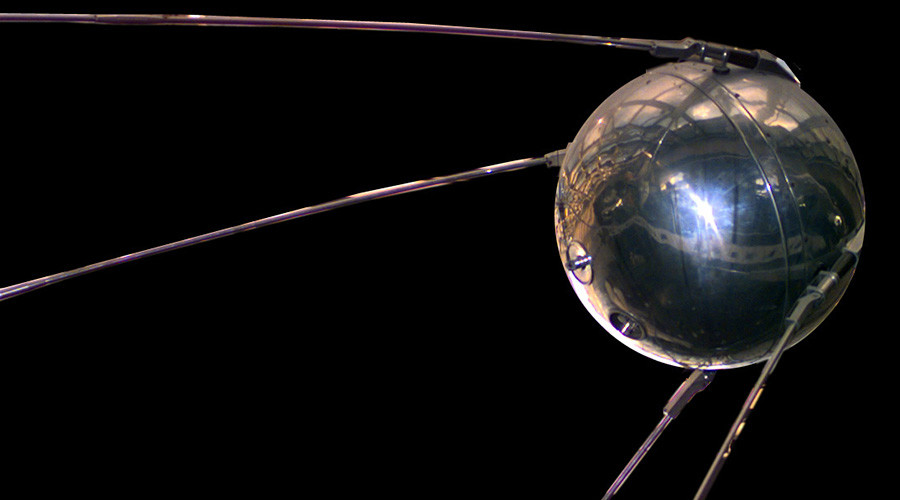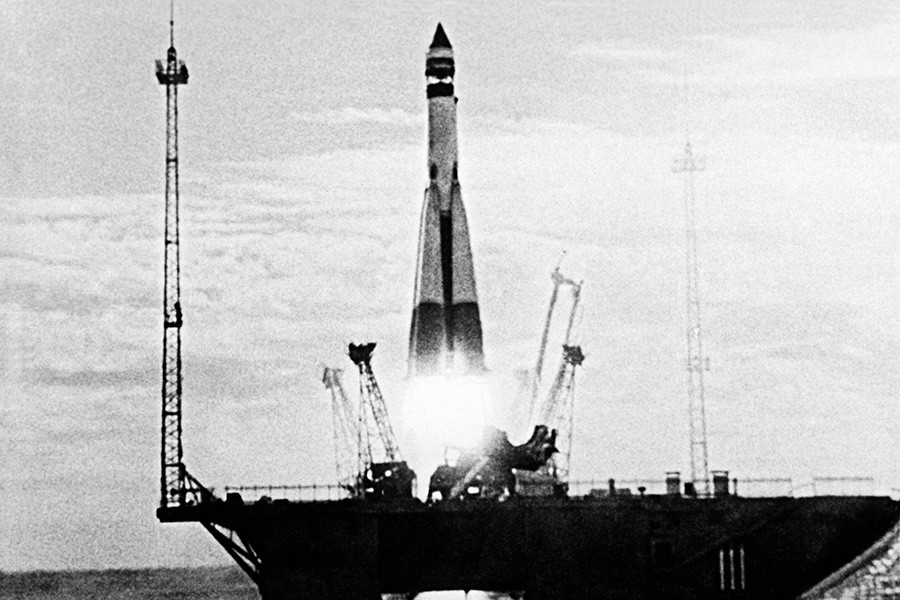Happy 60th birthday, Sputnik! How USSR launched mankind’s first satellite (PHOTO, VIDEO)

Sixty years ago, an aluminum ball about the size of washing machine drum was attached to an R7 rocket at a launch site in Kazakhstan and shot into space. Known as Sputnik 1, the USSR-made craft entered low orbit in October 1957 and became the first artificial satellite in space.
The mission gave the Soviet Union bragging rights over the US, which would go on to launch its own first satellite, Explorer 1, four months later in January 1958.
To put the Sputnik 1 achievement in context, the satellite did not make use of a single electronic microchip - as the technology had yet to be invented.
Interestingly, the device is also regarded as acting as the starting whistle of the so-called “space race” that would result in the USSR sending the first man into space and the US following this up with a man on the moon by 1969.
So what else do we know about the 1957 spacecraft?
Space revolution
Sputnik 1 entered orbit and reached the maximum height of 947 kilometers on October 4, 1957.
It took 295 seconds for the craft to reach its destination, and it flew for a total of 92 days. The first Sputnik orbited the Earth 1,440 times and traveled over 60 million kilometers.

After around three weeks, an electrical fault made communication with the satellite impossible. The satellite was observed visually after that until its decay in January 1958.
Dimensions and kit
Around 58 centimeters in diameter and weighing 83 kilograms, Sputnik 1’s technical abilities were basic in comparison to today’s satellites.
It was equipped with four antennas by which the device could send radio signals from any direction toward Earth.
The electronics were housed inside its spherical shell. Its radio transmitted on 40.002 MHz.

The Soviet Union originally planned for the device to be much larger, with a weight of some 1,400 kilograms, yet as the development progressed more slowly than the scientists expected, the Soviet Union decided to go for a smaller model.
The development was kept top secret and researchers even worked in a separate room with soundproof walls and windows.
Rocky rocket liftoff
According to Roscosmos, Russia’s main space agency, problems with the thrust of the R7 rocket engine at the time threatened to scupper the project and the deadline for launch was at one point pushed back to 1958.

During the launch, a main engine of one of the Sputnik’s boosters reached its thrust level later than expected, which threatened the whole operation. Yet the engine then recovered power, so catastrophe was averted.
‘Father’ of Sputnik
Sputnik’s development was led by iconic Soviet rocket engineer Sergei Korolev, and constructed by rocket manufacturer OKB-1.
It was then launched at the Baikonur Cosmodrome in Kazakhstan.
Korolev was also involved in Sputnik 2, which put the dog Laika into orbit in November 1957.
Spooked US intelligence
The Sputnik 1 mission was largely met with suspicion by some people who thought it could be sending out coded messages or weapons.
The satellite program concerned US intelligence to the point that it was mentioned in a CIA report on the Soviet Union’s potential to build “an extensive guided missile program.”
The 1957 report predicted that, after Sputnik, the USSR could have another satellite “possessing substantial reconnaissance capabilities” by 1963-65.
However, US physicist Lloyd Berkner congratulated the Soviet achievement in a Time magazine report back then.
‘The Space Age is here’
Following the launch of Sputnik 1, the Soviet and then international media reported widely on the key step forward in space exploration.
Headlines, such as those reading, “The Space Age is here” praised the landmark event.

The word Sputnik, in fact, was not even translated into foreign languages and was adopted worldwide as it was.
The launch even inspired some earthlings to show their creative side following the launch, as they had “Sputnik-style” haircuts.
‘Travelling companion’
The term Sputnik roughly translates from Russian into English as “travelling companion.”
Russian news agencies VOR and RIA Novosti later adopted the name, rebranding themselves as Sputnik News.
"It [Sputnik] transmitted a simple signal, but became known to the whole world. Back then, it was hard to imagine how much of a contribution to the development of society that engineering and scientific breakthrough would bring,” Roscosmos chief Igor Komarov said.

0 Comments:
Post a Comment
Subscribe to Post Comments [Atom]
<< Home